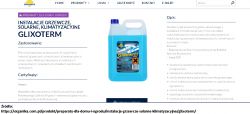In my company, one independent building has such a layout, it has been operating for several years without any problems.
Just because once, after a long period of non-use, the water burst the radiators ;)
1. Effect on rubber? Rather harmless, after all, there are rubber hoses in cars as well. People do all kinds of things, not necessarily with specialized cables, and there is no problem. Unless the rubber crumbles due to a lack of temperature resistance, the diaphragm of the vessel is resistant to it ;)
2. Bearings? The car does not have a pump? For this, clean water is not recommended due to the possibility of seizure. The fluid has light lubricating properties. CO pumps run on clean water and cope. So glycol and water won't hurt them.
3. I have already written about rubber, Teflon itself is a very non-reactive material with anything. Tow? The fluid is marginally thicker than water and "greasy". I haven't tested it personally, but it should penetrate even less than H2O.
4. Cars also combine different metals in the cooling system and there are no problems with chemical corrosion. Additionally, it has anti-corrosive and anti-scaling additives. The fluid is drained clean from the cars (as long as it is not being drained because of a malfunction). What is drained from CO is sometimes visible ...
5. CO efficiency is higher with clean water. Water has a very high specific heat. Almost 2x higher than glycol. Well, automotive coolant is not pure glycol. Average 50-50 glycol / water. For CO applications, the water ratio can be significantly increased. The building is not a car standing in a frosty parking lot, and the capacity of the systems is significantly different.
Anyway, the car coolant does not harm the water cooling system in my computer

It performs better and the system is cleaner than with "dedicated" fluids. The only problem was when I poured the concentrate only to make it a nice intense color. It was so dense that the pump had a problem pumping it





